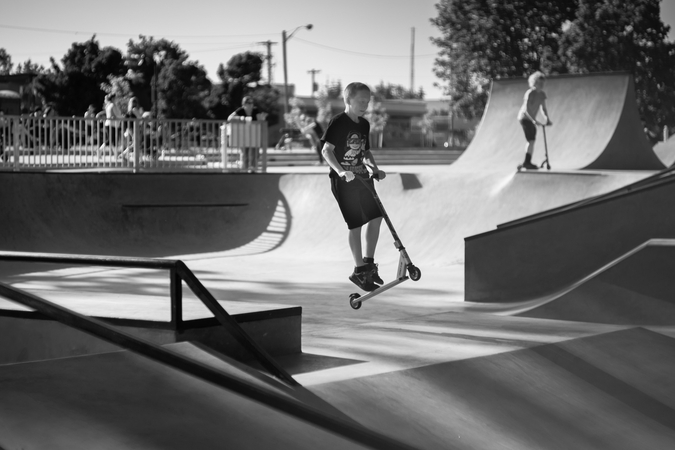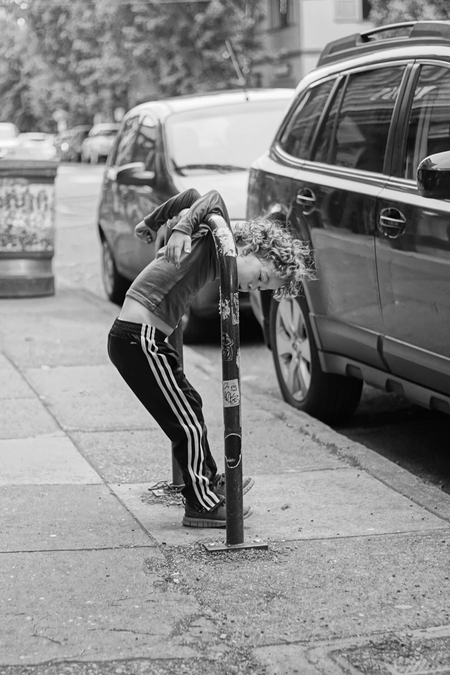Ko.Fe.
Lenses 35/21 Gears 46/20
I could afford Fuji, but not digital Leica. So, I'm using Film M and DSLRs for digital. DSLR, this is where no lag is and AF works for real. 🙂
If I go on the street on bright day, it is film M and zone focusing, because AF will fail on busy street on me.
But tonight we went to see some Christmas lights. I din't bothered to load my film Leica. It is useless in the dark. I took DSLR with fast AF lens instead.
Instant focusing on face under low light.
And once a year I took pictures of hundred or so kids riding on bicycles. It is about thousand or so pictures with about dozen or so OOF. Taken with AF in servo (tracking) mode. MF is not an option for snapshots like this.
i wonder if autofocus will ever be good enough to replace scale and zone focusing for instant snapping...
If I go on the street on bright day, it is film M and zone focusing, because AF will fail on busy street on me.
But tonight we went to see some Christmas lights. I din't bothered to load my film Leica. It is useless in the dark. I took DSLR with fast AF lens instead.
Instant focusing on face under low light.
And once a year I took pictures of hundred or so kids riding on bicycles. It is about thousand or so pictures with about dozen or so OOF. Taken with AF in servo (tracking) mode. MF is not an option for snapshots like this.




